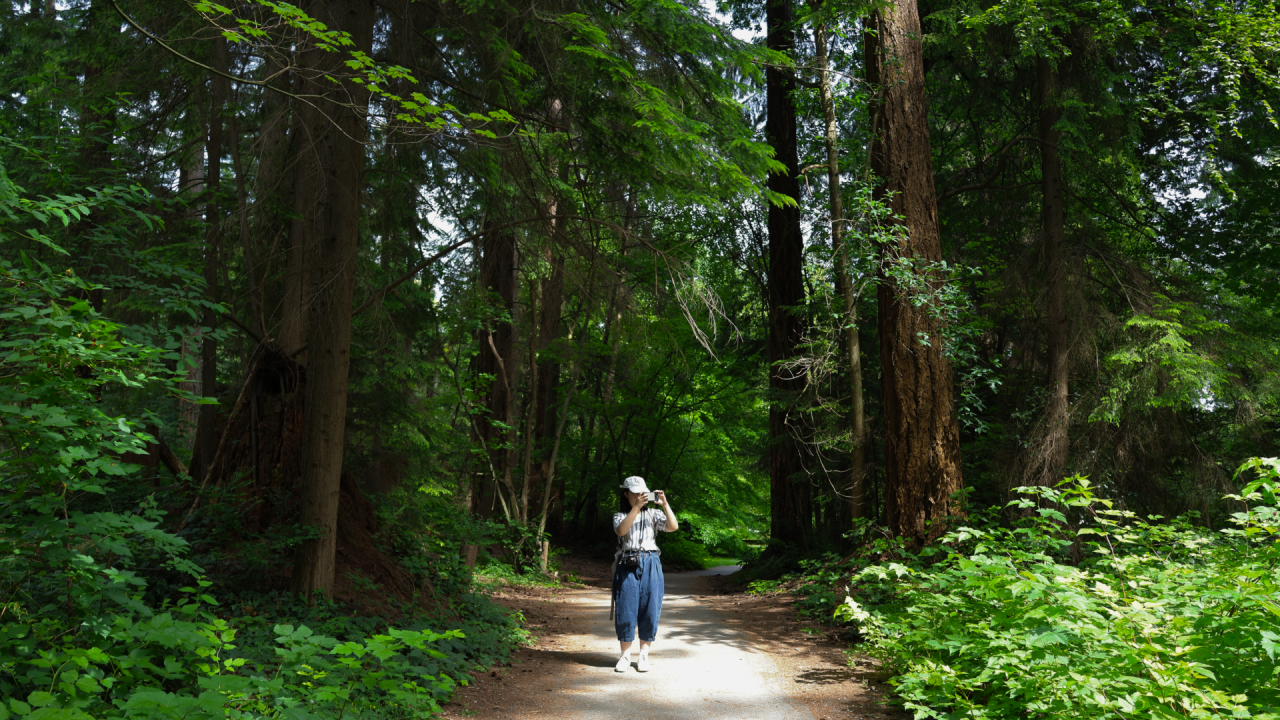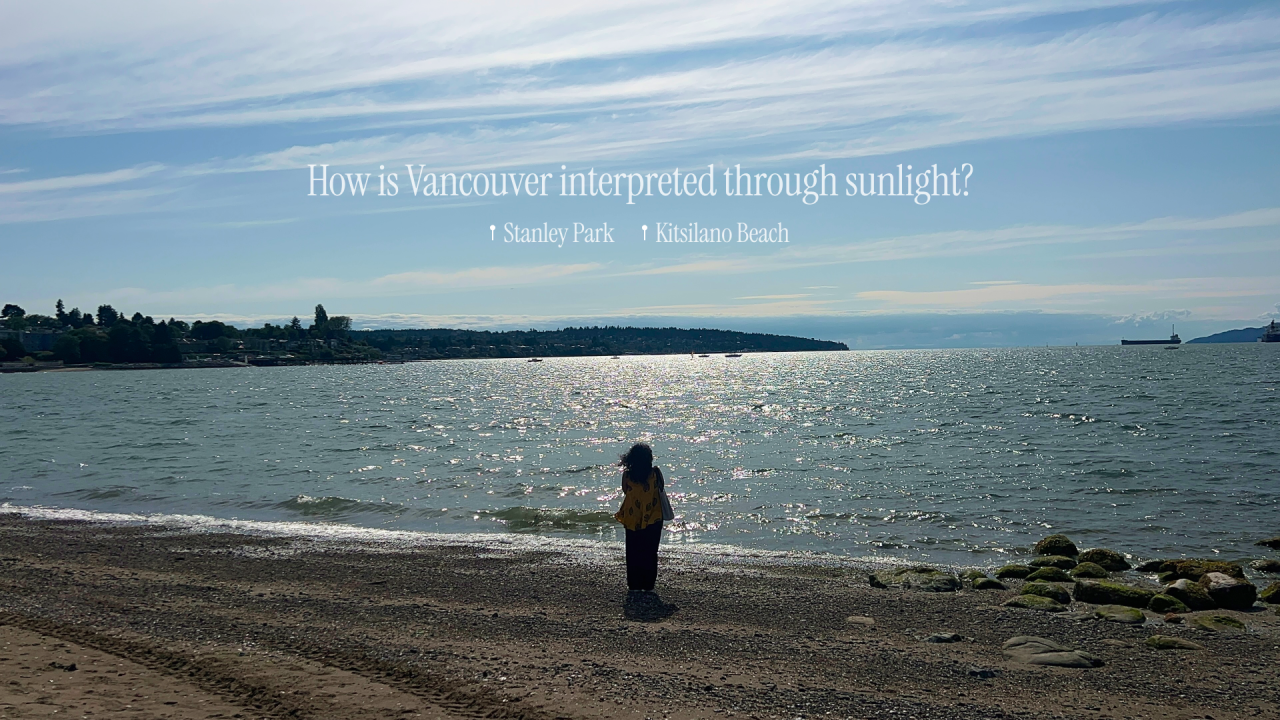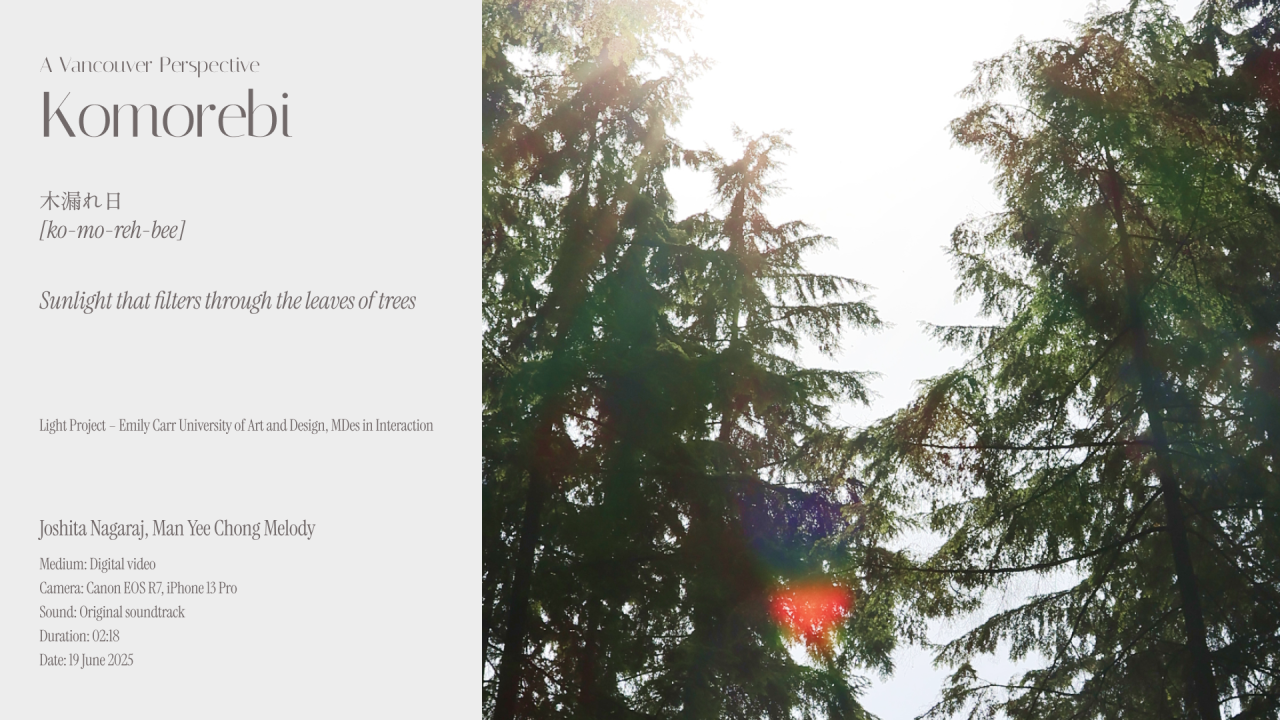‘Light Project’ Brings Together Design Students from Three Continents to Respond to Daylight

In their project Komorebi, Joshita Nagaraj (left) and Man Yee “Melody” Chong explored the cultural and social impacts of sunlight in Vancouver. (Photo by Perrin Grauer)
Posted on | Updated
The collaborative project aims to develop global connections through diverse creative responses to the shared experience of sunlight.
A new design collaboration responding to daylight links Master of Design students at Emily Carr University of Art + Design (ECU) with students at universities in Seattle, London and Hong Kong.
Light Project invited the intercontinental group to co-design responses to the light in their city as the sun passed through time zones on the longest day of the year.
Master of Design students Joshita Nagaraj (MDes 2025) and Man Yee “Melody” Chong (MDes 2025), both of whom are international students, say the project’s challenges also came with rewards, including insights into their personal relationships with their adoptive city.
“The brief was open ended and we had complete creative freedom,” Joshita says. “This felt a bit challenging at first, but when we began engaging with the project and students from the other universities, I realized how I’ve subconsciously become a part of this community.”
“Spending time in Stanley Park and Kitsilano Beach helped me to rediscover the speed of living in Vancouver,” Melody adds. “I felt a dynamic between those two places, and reminded me how Vancouver can appear to a newcomer like myself, which I really enjoyed.”

Melody walks through Stanley Park. (Courtesy Man Yee Chong and Joshita Nagaraj)
After a series of meetings between student teams in the weeks leading up to summer solstice, the students debuted their responses on June 20, metaphorically passing the daylight from one group to the next as the sun traced its path across the globe.
Beginning at sunset in Hong Kong, students at Hong Kong Polytechnic University (HK PolyU) School of Design shared cyanotypes recording the day’s sunlight in their city.
Having viewed Hong Kong’s project, students at the London College of Communication of the University of Arts London shared their response — an experimental work incorporating data including weather forecasts and videos submitted by students in other cities — as the sun set in the UK.
Finally, students at ECU and at Human Centered Design & Engineering at the University of Washington shared their responses with Hong Kong during the 11 minutes between the sun setting in Seattle and Vancouver.

Joshita stands along the tide line at Kits Beach. (Courtesy Man Yee Chong and Joshita Nagaraj)
Designer and ECU faculty member Manuhuia Barcham facilitated the ECU students’ participation in the event. In addition to providing a practical application of classroom skills, he says Light Project was a community-building exercise aimed at developing connections and fellowship between designers on different continents.
“It’s a global job market and connections are important as our students begin their careers,” he says. “And like much of what we teach at ECU, these kinds of projects help students become critical thinkers, good citizens and employable.
“In parallel to that, we chose this project because the world can seem so fractured. We may be in different places, but we do share the sun. So, here’s a way to show a connection between us, which offers some pushback to that fractiousness.”

From Komorebi by Man Yee Chong and Joshita Nagaraj. (Courtesy Man Yee Chong and Joshita Nagaraj)
Melody and Joshita’s contribution to Light Project is a three-minute, atmospheric audio-video work titled Komorebi exploring sunlight in Vancouver as a metaphorical engine that activates community in the city’s semi-wild public spaces. The work features birdsong, wildlife, light filtering through trees, and the gathering of people in Stanley Park and at Kitsilano Beach.
“We were thinking about how sunlight influences culture and social interactions in Vancouver,” Joshita says. “We were looking at how sunlight draws people outside and creates a different sense of community. I found it interesting to see how different universities have their own work process and cultures. Our idea was to respond through metaphorical dialogue where we wanted to capture the significance of sunlight in Vancouver. I believe this is what set us apart from other universities.
Our ideas were more metaphorical and open-ended than the other teams.”
Melody and Joshita say this open-endedness reflects the ways ECU students are encouraged to look across disciplines — including to practitioners working in the arts — during their studies.
“Other participants were more technical. They experimented with specific technologies,” Melody says. “We wanted to make our response as simple and direct as possible, which I think reflects our university’s design culture and ways of working.”
The pair note their fellow teams say the video brought feelings of peace, calm and serenity.
“This project reminded me how precious it is to be here. It is so easy to walk outdoors and capture something truly beautiful,” says Melody, who is from Hong Kong and got her Bachelor of Design from HK PolyU. “But I also admire the hustle and bustle in my hometown too. I was reminded of those differences. And sharing our response with Hong Kong at the end felt like a full circle.”